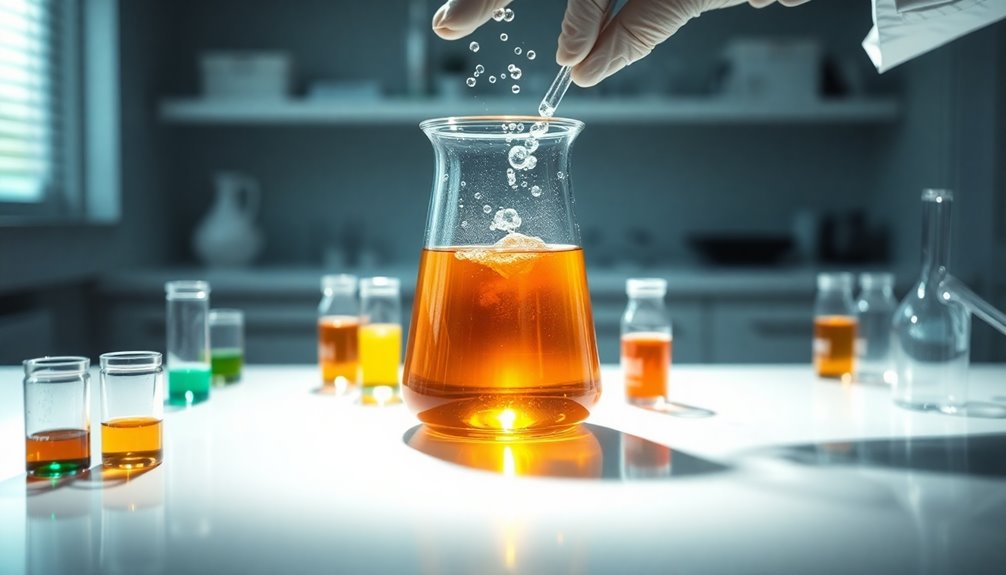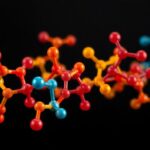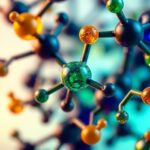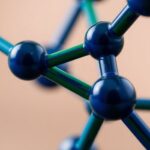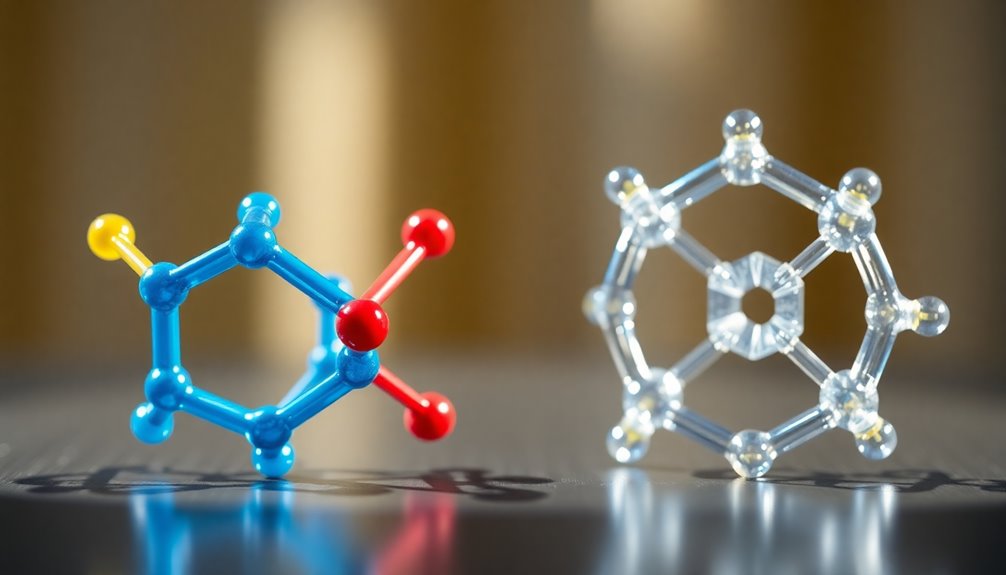Aromatic compounds can be polar or nonpolar, depending on their structure and the functional groups attached to them. For example, benzene is nonpolar due to its symmetrical ring structure and minimal charge separation. However, when polar substituents, like -OH or -NH₂, are present in compounds such as phenol or aniline, they become polar. This variation in polarity profoundly affects how these compounds interact with other substances. So, whether an aromatic compound is polar or nonpolar can influence its solubility and reactivity in different environments. Stick around to uncover more about these fascinating characteristics!
Key Takeaways
- Aromatic compounds can be either polar or nonpolar, depending on the substituents attached to the aromatic ring.
- Benzene, a simple aromatic compound, is nonpolar due to its symmetrical structure and lack of electronegative substituents.
- The presence of polar substituents, like -OH or -NH2, can significantly increase the polarity of an aromatic compound.
- Polar aromatic compounds, such as phenol, can dissolve in polar solvents due to their ability to form hydrogen bonds.
- Nonpolar aromatic compounds, like toluene, are more soluble in nonpolar solvents, demonstrating the influence of polarity on solubility.
Overview of Aromatic Compounds
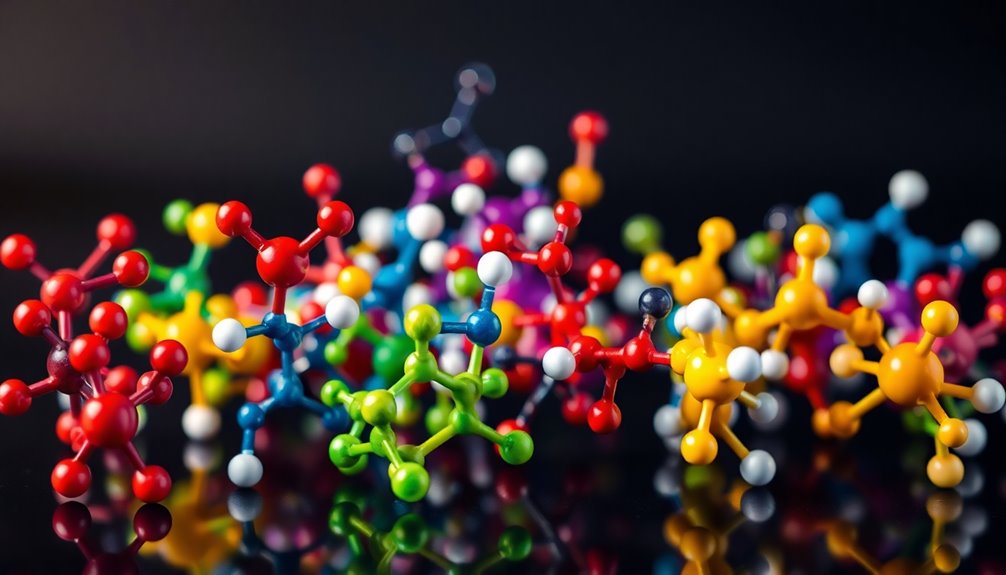
When you plunge into the world of aromatic compounds, you'll quickly notice their distinct ring structures and the presence of delocalized electrons. These compounds typically follow Huckel's rule, containing 4n + 2 π electrons, which grants them aromaticity.
Benzene (C₆H₆) stands out as the simplest and most recognized aromatic compound, showcasing a symmetrical structure that contributes to its nonpolar characteristics.
You'll also encounter heteroarenes, which include heteroatoms like oxygen or nitrogen, influencing their polarity and reactivity.
Common examples of aromatic compounds, such as toluene, phenol, and aniline, vary in polarity due to different substituents. Their unique resonance stability leads to distinct reactivity patterns, making aromatic compounds fascinating in organic chemistry.
Structure and Characteristics

Aromatic compounds are defined not just by their unique properties but also by their distinct structure. You'll notice that aromatic hydrocarbons, like benzene, feature a symmetrical ring structure with delocalized electrons. This arrangement contributes to their nonpolar characteristics.
The electronegativity difference between carbon and hydrogen is minimal, preventing significant charge separation and reinforcing their nonpolar behavior. While most aromatic compounds are nonpolar, introducing polar substituents, such as -OH or -NO2 groups, can create polarity in the molecule.
Additionally, aromatic rings adhere to Hückel's rule, requiring 4n + 2 π electrons for stability, which enhances their nonpolar nature. As a result, these compounds have hydrophobic properties, leading to limited solubility in polar solvents like water.
Polarity in Aromatic Compounds

Understanding the polarity of aromatic compounds is vital because it greatly influences their interactions and applications. Aromatic compounds can be polar or nonpolar, and their polarity is determined by substituents on the aromatic ring.
For instance, benzene is nonpolar due to its symmetrical structure, while nitrobenzene is a polar molecule because of its nitro group. Polar substituents like hydroxyl (-OH) or amino (-NH2) can induce polarity, making compounds like phenol and aniline more hydrophilic.
This polarity affects their solubility; nonpolar aromatic compounds dissolve well in nonpolar solvents, while polar molecules interact favorably with polar solvents. Grasping these concepts is fundamental for predicting the chemical behavior and applications of aromatic compounds in fields like pharmaceuticals and materials science.
Examples of Aromatic Molecules
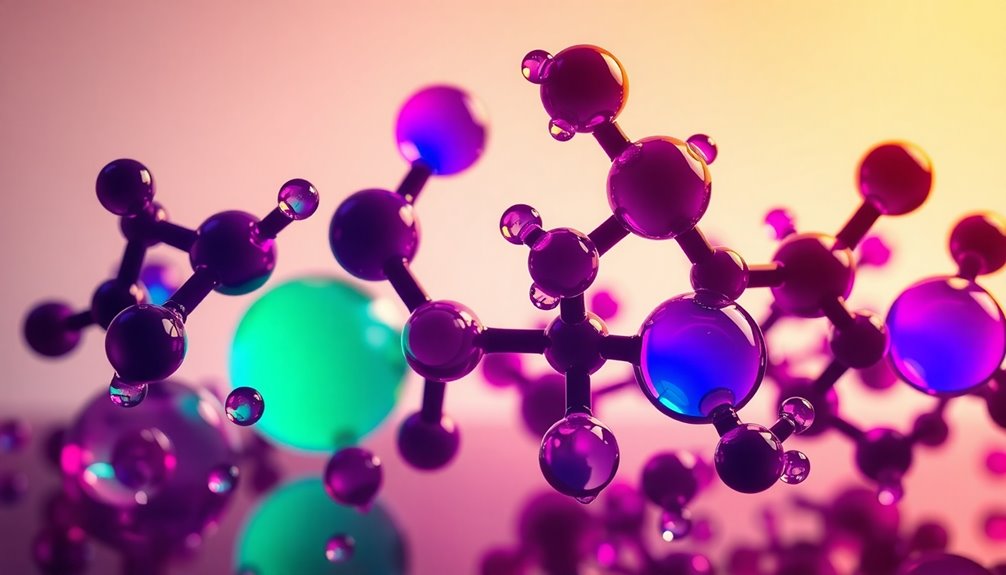
Polarity plays a significant role in determining the properties of various aromatic molecules. Understanding the polarity of different compounds can help you predict their behavior in chemical reactions and interactions.
Here are some examples of aromatic molecules and their characteristics:
- Benzene (C₆H₆): A classic nonpolar aromatic compound, thanks to its symmetrical structure and equal charge distribution.
- Nitrobenzene (C₆H₅NO₂): A polar aromatic molecule, where the nitro group creates a significant dipole moment.
- Aniline (C₆H₅NH₂): This polar compound features an amino group, enabling hydrogen bonding with polar solvents.
These examples showcase how the presence of functional groups in aromatic rings can influence their polarity and overall properties.
Factors Influencing Polarity

When evaluating the polarity of aromatic compounds, several key factors come into play. One essential aspect is the presence of polar substituents. These substituents can enhance the overall polarity of the molecule, while nonpolar substituents tend to maintain nonpolar characteristics.
Additionally, the symmetry of an aromatic structure, like benzene, often leads to nonpolar traits due to balanced electron distribution. Conversely, compounds featuring electronegative atoms, such as phenol, show increased polarity thanks to functional groups like the hydroxyl group, which can form hydrogen bonds.
Finally, the molecular geometry plays a significant role; planar structures with delocalized electrons typically exhibit nonpolar properties, minimizing charge separation and affecting solubility in various solvents.
Comparison of Solubility
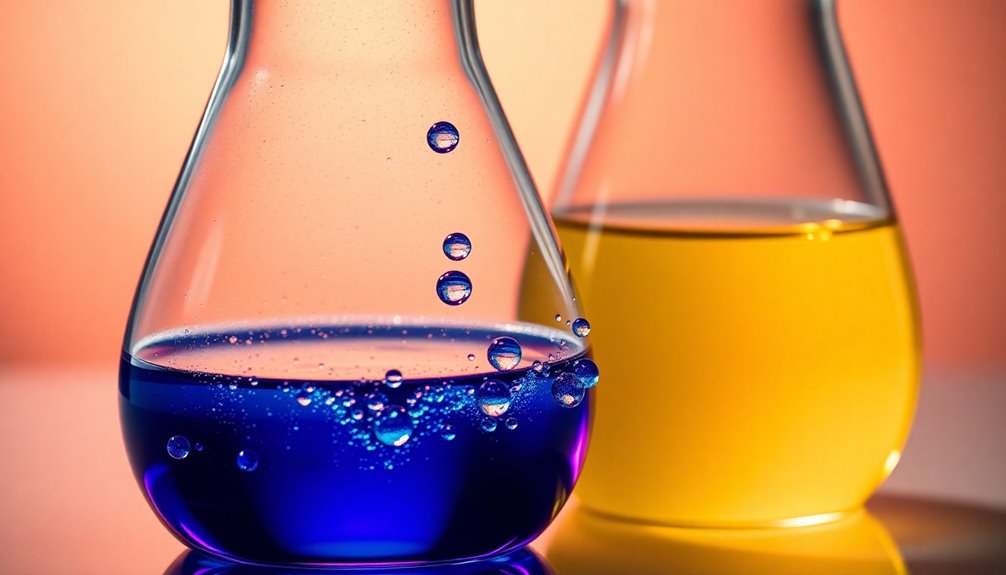
When comparing the solubility of aromatic compounds, you'll notice that their nonpolar nature affects how well they dissolve in different solvents.
For instance, while phenol has a polar hydroxyl group, it still shows limited solubility in water compared to fully polar substances.
Understanding these solubility factors can help you predict how aromatic compounds behave in various environments.
Aromatic Compound Solubility Factors
Understanding the solubility of aromatic compounds hinges on their structural characteristics and substituents. The influence of functional groups is essential in determining how well these compounds dissolve in various solvents.
- Nonpolar aromatic compounds, like toluene, are soluble in nonpolar solvents but not in polar ones.
- Polar substituents, such as -OH in phenol, enhance solubility in polar solvents, although phenol's water solubility remains limited.
The overall symmetry and electronegativity of substituents markedly affect both polarity and solubility.
Polar vs. Nonpolar Solubility
Aromatic compounds can vary considerably in their solubility based on their polarity. Nonpolar aromatic compounds like benzene show minimal solubility in polar solvents due to their symmetrical structure and lack of electronegative substituents.
In contrast, polar aromatic compounds such as phenol and nitrobenzene have limited solubility in water, despite their polar functional groups. For example, phenol dissolves at about 8 g per 100 mL, while toluene's solubility is much lower. This illustrates how hydrophobic aromatic rings impact overall solubility.
Ethanol and methanol are infinitely miscible with water, demonstrating how strong polar hydroxyl groups vastly improve solubility compared to aromatic compounds with significant nonpolar characteristics, like cyclohexanol, which has even lower solubility at 3.6 g per 100 mL.
Hydrophobic Nature Explained
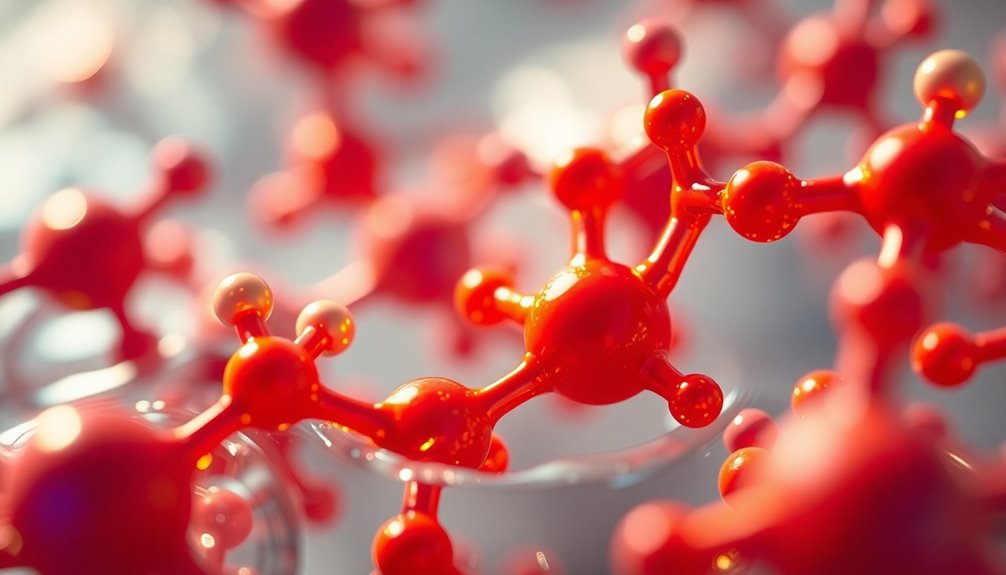
While many compounds interact easily with water, aromatic compounds tend to resist such interactions due to their hydrophobic nature. Their symmetrical structures and non-polar characteristics mean they lack significant electronegative atoms. This results in minimal interaction with polar solvents like water.
The presence of delocalized electrons in aromatic rings enhances their stability and promotes aggregation in aqueous environments.
- Hydrophobic interactions lead to low solubility in polar solvents.
- Phenol is an exception, thanks to its hydroxyl group, which introduces some polarity.
- Understanding this hydrophobic nature is crucial for biological interactions and drug design.
Recognizing these traits helps you grasp how aromatic compounds behave in various environments, influencing their applications in science and industry.
Applications of Aromatic Compounds

Given their unique chemical properties, aromatic compounds find extensive applications across various industries.
You'll see these compounds in the production of dyes, pharmaceuticals, and fragrances, where they enhance product performance.
Polar aromatic compounds, like phenol, act as vital intermediates in organic synthesis, boosting reactivity in chemical processes.
On the other hand, nonpolar aromatic compounds such as toluene serve as effective solvents, dissolving a wide range of nonpolar substances in industrial settings.
Additionally, aromatic amino compounds play a significant role in materials science, contributing to the development of advanced polymers and materials.
However, it's important to take into account the potential toxicity and persistence of these compounds, which underscores the need for careful management in their applications.
Implications in Organic Chemistry
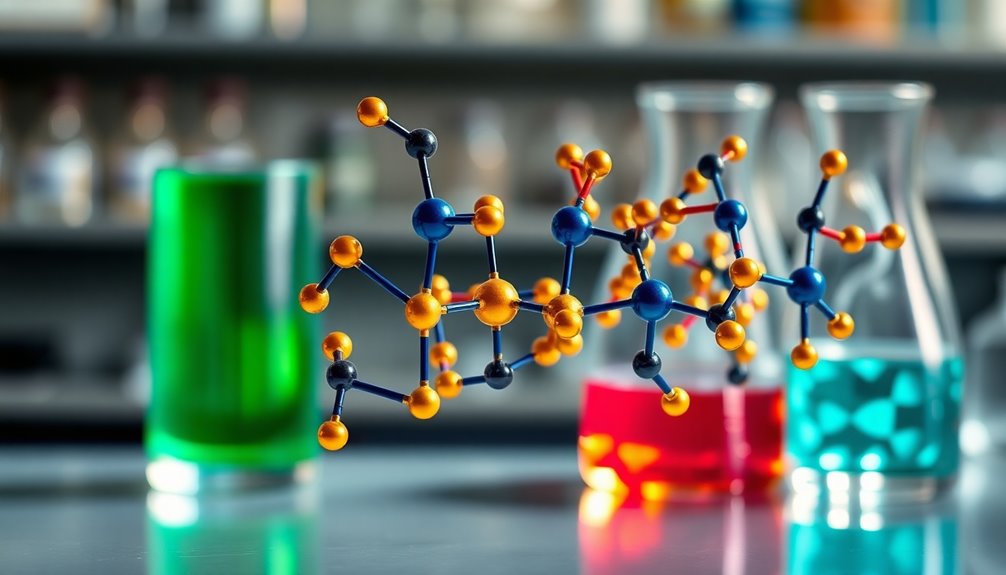
Understanding the polarity of aromatic compounds plays an essential role in organic chemistry, as it directly influences their solubility, reactivity, and interactions with various solvents and molecules.
For example, polar aromatic compounds like nitrobenzene and phenol can form hydrogen bonds, enhancing their compatibility with polar solvents. In contrast, nonpolar aromatic compounds such as benzene and toluene remain hydrophobic, limiting solubility in polar environments.
Consider these implications:
- Polar substituents can shift an aromatic compound's overall polarity.
- Different reactivity patterns arise during electrophilic and nucleophilic substitutions.
- Predicting reaction outcomes becomes easier with a solid understanding of aromatic polarity.
With this knowledge, you can design effective synthesis pathways and select the right solvents for your reactions.
Summary of Key Points
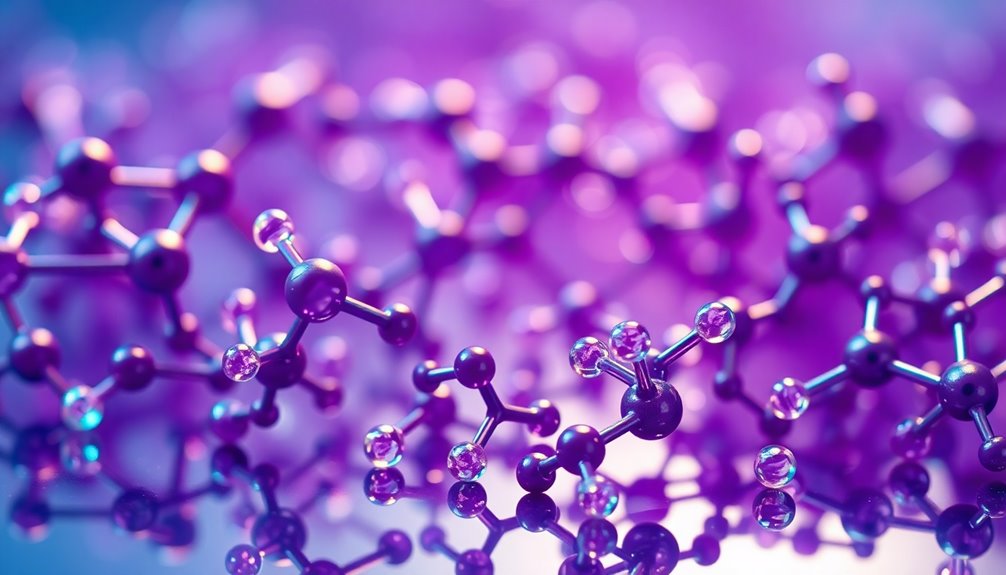
In conclusion, understanding the polarity of aromatic compounds is essential for predicting their behavior in various chemical scenarios.
You'll find that while many aromatic compounds are nonpolar, introducing polar substituents can alter their polarity and solubility.
This knowledge impacts how these compounds interact with solvents and other chemicals in organic chemistry.
Aromatic Compound Polarity
Aromatic compounds exhibit varying degrees of polarity based on the substituents attached to their rings. For instance, benzene is nonpolar, while nitrobenzene is polar due to the nitro group. The presence of electronegative substituents, like -OH in phenol, increases polarity compared to nonpolar counterparts.
Symmetrical compounds, such as benzene, usually show nonpolar characteristics due to a uniform distribution of electron density.
- Polarity affects chemical behavior and interactions.
- Nonpolar aromatic compounds struggle with solubility in polar solvents.
- Polar substituents enhance interaction with polar environments.
Understanding these aspects of polarity can greatly enhance your grasp of organic synthesis and biological systems, highlighting the importance of the substituents attached to aromatic rings.
Solubility in Solvents
Solubility in solvents hinges on the polarity of aromatic compounds and their substituents. Generally, nonpolar aromatic compounds like benzene dissolve well in nonpolar solvents due to their symmetrical structure.
However, polar aromatic compounds, such as phenol and nitrobenzene, can dissolve in polar solvents thanks to their polar functional groups. For instance, while phenol's solubility in water is limited to about 8 g per 100 mL, it mixes infinitely with polar solvents like ethanol and methanol.
This highlights the critical role of polarity in solubility. Additionally, the presence of polar substituents can alter an aromatic compound's overall polarity, affecting not just solubility but also boiling and melting points, as well as intermolecular interactions.
Frequently Asked Questions
Are Aromatic R Groups Polar or Nonpolar?
When you consider aromatic R groups, you'll find they're generally nonpolar. Their symmetrical structure and lack of highly electronegative atoms prevent significant charge separation.
The delocalized electrons within the aromatic ring provide stability through resonance, reinforcing this nonpolar characteristic.
While some polar functional groups can attach to these aromatic structures, the base aromatic nature remains primarily nonpolar, influencing interactions in biological systems and affecting the behavior of proteins in aqueous environments.
How to Tell if Nonpolar or Polar?
Imagine holding two magnets, feeling their pull or push. To tell if a molecule is polar or nonpolar, look for electronegativity differences; strong differences usually mean polar bonds.
Check the shape, too—symmetrical structures often suggest nonpolar, while asymmetrical ones lean toward polar.
Don't forget functional groups! Polar ones, like -OH, increase polarity.
Finally, test solubility: polar substances dissolve in polar solvents, while nonpolar ones mix with nonpolar solvents.
Are Aromatics Hydrophobic or Hydrophilic?
Aromatics are generally hydrophobic, meaning they tend to repel water. This characteristic comes from their nonpolar nature, which results from the symmetrical arrangement of electrons within their ring structures.
When you consider their behavior in water, you'll notice that aromatic compounds often aggregate instead of dissolving. This hydrophobicity plays a significant role in various applications, including organic synthesis and drug design, influencing how these compounds interact in biological systems and the environment.
Are Cyclic Compounds Polar or Nonpolar?
When you think of a merry-go-round, consider how cyclic compounds spin in a world of polarity. Their nature can swing either way.
You'll find some cyclic compounds are nonpolar, like cyclohexane, thanks to their symmetrical structures. However, if you add electronegative atoms or polar groups, they can become polar, shifting the balance.
Conclusion
So, you thought all aromatic compounds were nonpolar and simple? Surprise! While many have that nonpolar vibe, others can be quite the polar opposites, thanks to their functional groups. It's almost like they're playing hide and seek with their true nature. Remember, just because something's aromatic doesn't mean it's predictable. Dive deeper into their chemistry, and you'll find a world where even the sweetest scents can have a twist!

